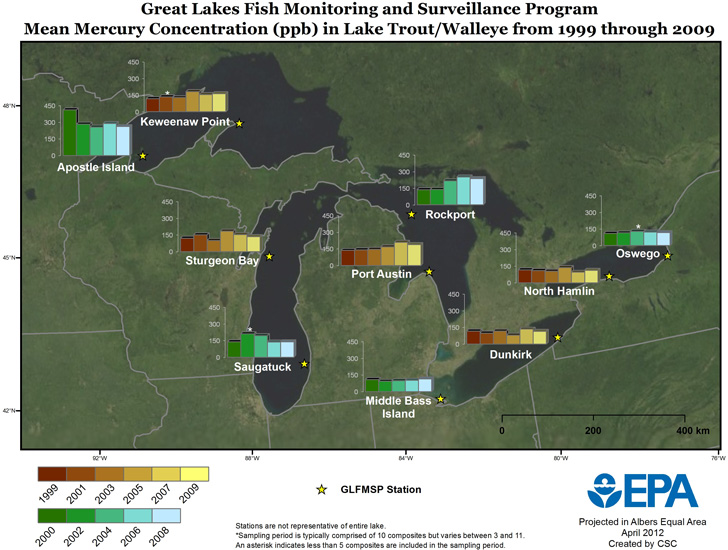Great Lakes Open Lakes Trend Monitoring Program: Total Mercury
Concentrations of mercury are similar across all fish in all Great Lakes. There is an assumption that concentrations of mercury in top predator fish are atmospherically driven and increases may be a reflection, in part, of increased global mercury emissions (Pacyna et al. 2006). It is important to note that median concentrations of mercury in all top predator fish collected in Lakes Ontario, Erie, Huron and Michigan are below the Great Lakes Water Quality Act guideline of 0.5 µg/g. Exceedances of the guideline only occurred in ~4% of the Lake Trout captured in Lake Superior.
Mercury concentrations in top predator fish are equal to or approaching the concentrations measured at the beginning of the monitoring program in the late 1970s. Following the change, mercury levels have been stable in lakes Huron and Ontario and appear to be increasing in lakes Superior and Erie. Mercury levels at U.S. EPA monitoring locations since 1999 mirror the Environment Canada results with one exception, in Lake Huron there has been a significant annual increase of mercury in lake trout of ~7%.
The observed trend reversal in mercury concentrations in fish is consistent with findings (Monson 2009; Bhavsar et al. 2010; Monson et al. 2011) of mercury. Unfortunately, the data gap from the mid to late 1990s does not leave a sufficient number of data points to determine the rates increase due to low statistical power. Continued monitoring of mercury levels in fish is required to definitively determine the rate of increase in mercury in all the lakes and adequately assess the future risk to wildlife consumers of fish in the Great Lakes basin.

